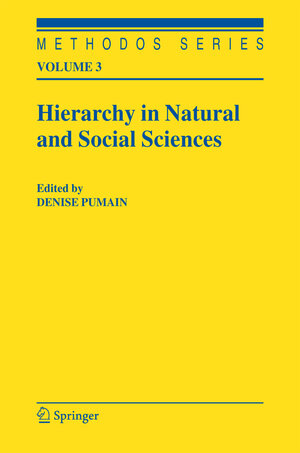
From the reviews:
„This book, consisting of seven chapters from eight authors in addition to editor Denise Pumain, looks at the nature of hierarchy in a variety of disciplines. … The book is an excellent compilation of studies on the nature of hierarchy, which ought to be of importance to scholars in a variety of fields. Pumain’s thoughtful introduction and conclusion offer new directions in examining complexity.“ (Linda Harris Dobkins, Journal of Regional Science, Vol. 47 (3), 2007)
„This volume 3 of the Methodos Series examines the major methodological problems faced by the natural and social systems sciences. … Both the Introduction and Conclusion by the editor are indeed invaluable! … the book are a directive to those professionals who ought to be concerned with hierarchy concepts–all professionals are to be involved! … Numerous types of classification of hierarchies are available to fulfill various demands.“ (Karl H. Wolf, International Journal of General Systems, Vol. 36 (5), 2007)
Hierarchy in Natural and Social Sciences
herausgegeben von Denise PumainHierarchy is a form of organisation of complex systems that rely on or produce a strong differentiation in capacity (power and size) between the parts of the system. It is frequently observed within the natural living world as well as in social institutions. According to the authors, hierarchy results from random processes, follows an intentional design, or is the result of the organisation which ensures an optimal circulation of energy for information.
This book reviews ancient and modern representations and explanations of hierarchies, and compares their relevance in a variety of fields, such as language, societies, cities, and living species. It throws light on concepts and models such as scaling laws, fractals and self-organisation that are fundamental in the dynamics and morphology of complex systems.
At a time when networks are celebrated for their efficiency, flexibility and better social acceptance, much can be learned about the persistent universality and adaptability of hierarchies, and from the analogies and differences between biological and social organisation and processes. This book addresses a wide audience of biologists and social scientists, as well as managers and executives in a variety of institutions.






